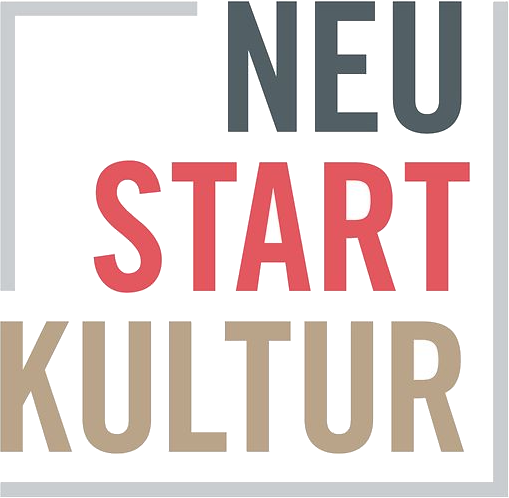Solo Show „Stephen Willats. Time Tumbler“
22.11.2023 - 13.01.2024
Opening: Wednesday, November 22, 2023, 6-8 p.m.
Victoria Miro, London

An exhibition by the pioneering British conceptual artist on the occasion of his eightieth birthday, bringing together new works and seminal examples from the 1970s.
Victoria Miro is delighted to present an exhibition by pioneering British conceptual artist Stephen Willats on the occasion of his eightieth birthday. Bringing together new works and seminal examples from the 1970s, Time Tumbler, curated with Jelena Kristic, charts developments in the artist’s singular language, reveals the constancy of his vision and celebrates his long-standing relationship with the gallery.
For six decades Stephen Willats has concentrated on ideas that today are ever-present in contemporary art – participation, communication, social interaction, active spectatorship and self-organisation. Initiating many seminal multi-media projects based on places, spaces and the lived experiences of participants outside of a traditional art context, Willats has situated his pioneering practice at the intersection between art and other disciplines such as cybernetics (the hybrid post-war science of communication), advertising, systems research, learning theory, communications theory and computer technology. In so doing, he has constructed and developed a practice grounded in the variables of social relationships, settings and physical realities. Rather than presenting icons of certainty, he creates an environment that stimulates viewers to engage in their own creative process, redefining the relationship between artist and audience, and the social function and agency of art.
In celebration of Willats’ eightieth birthday and his long-standing collaboration with the gallery, this exhibition demonstrates the evolution of his aesthetic vocabulary and its conceptual underpinning as the world around us has changed. Concerned with notions of time – within and between the works on view – it gathers the artist’s first diagram works of the 1970s resulting from site-specific, interactive projects with people in their communities, and juxtaposes these with recent works.
During the 1970s, Willats conceived an entirely new way for an artist to work in society, creating projects in areas of London, Nottingham and Edinburgh with people in their real domestic or work environments that evolved over considerable periods of time. This strategy also challenged the accepted view of artworks on a gallery wall; presented sequentially, Willats’ photographic collages of the period often pose a series of questions, asking the viewer to consider their own perceptions and responses and thus move, in time, towards mutuality. While challenging, Willats approach piqued the interest of international curators and museum directors and led to influential exhibitions at venues including Whitechapel Gallery, London; Stedelijk van Abbemuseum, Eindhoven; and National Gallery, Berlin.
Recent works develop the time-based, social and feedback processes underlying the production and interactivity of the 1970s works. The „Time Tumbler“ (2019–2022) series, after which the exhibition is titled, was inspired by a British Museum commission conceived by Willats, in which visitors would personally define a system of relationships bridging the ancient and current network of associations around an ancient artefact in the museum’s collections. Other recent works, including those created with residents living in Somers Town and the Golden Lane Estate in London, reflect on time passing, past and present lives, and aspects of ageing in relation to visibility and self-perception.
„Time Tumbler“ models our relationship and experience of and with time, its continuity and discontinuity, and the links we create between past and future time that enable our self-determination.
The exhibition is accompanied by a publication featuring new writing on the artist by Jelena Kristic, Bronac Ferran and John Kelsey.
About the artist:
Stephen Willats was born in 1943 in London, where he continues to live and work. Recent solo institutional exhibitions include “The Social Resource Project for Tennis Clubs“, Nottingham Trent University (2022); „Languages of Dissent“ at Migros Museum, Zürich (2019). His work has also recently been featured in „Coded: Art Enters the Computer Age, 1952 – 1982“, Los Angeles County Museum of Art (2023); „Light Works from the Tate Collection“, Museum of Art Pudong, Shanghai, China; „Rhythm and Geometry, Constructivist Art in Britain since 1951“, Sainsbury Centre, Norwich (2021); „Not Working – Artistic Production and Social Class“, Kunstverein, Munich; „What If ... on Utopia in Art, Architecture and Design“, Neues Museum, Nuremberg; „Objects of Wonder: From Pedestal to Interaction“, Aarhus Kunstmuseum, Denmark; „Bodies – Cities: Collections and Excursions“, Museum der Moderne, Salzburg (2020); Chicago Architecture Biennial (2019–2020), „Still Undead: Popular Culture in Britain Beyond the Bauhaus“ at Nottingham Contemporary (2019–2020), “Pushing Paper: Contemporary Drawing from 1970 to Now“ at the British Museum (2019–2020), „Objects of Wonder, British Sculpture 1950s–Present“, featuring works from the Tate collection, at the PalaisPopulaire, Berlin (2019).
Previous solo exhibitions held at international institutions include „Control“, Tate Liverpool (2018); „HUMAN RIGHT“, mima, Middlesbrough (2017); „THISWAY“, INDEX, Stockholm (2016); „Man from the 21st Century“, Museo Tamayo Arte Contemporáneo, Mexico City (2014–2015); „Concerning our Present Way of Living“, Whitechapel Gallery, London (2014); „Control: Work 1962-69“, Raven Row, London (2014); „Conscious – Unconscious, In and Out the Reality Check“, Modern Art Oxford, Oxford (2013); Stephen Willats: „Surfing with the Attractor“, South London Gallery, London (2012); „COUNTERCONSCIOUSNESS“, Badischer Kunstverein, Karlsruhe, Germany (2010); „Assumptions and Presumptions“, Art on the Underground, London (2007); „From my Mind to Your Mind“, Milton Keynes Gallery, (2007); „How the World is and How it could be“, Museum für Gegenwartskunst, Siegen (2006); „Changing Everything“, South London Art Gallery, (1998); „Buildings & People“, Berlinische Galerie, Berlin, (1993); „Meta Filter and Related Works“, Tate Gallery London, (1982); „Concerning Our Present Way of Living“, Stedelijk van Abbemuseum, Eindhoven, (1980); „4 Inseln, in Berlin“, National Gallery, Berlin, (1980); „Concerning our Present Way of Living“, Whitechapel Art Gallery, London (1979).
In 1965 Willats founded the magazine Control, which is still in publication.
Image: Stephen Willats: „Language Islands“, 2021, photographic prints, photographic dye, acrylic paint, ink, pencil, 81.5 x 105 cm, 32 1/8 x 41 3/8 in, © Stephen Willats, Courtesy the artist and Victoria Miro.


